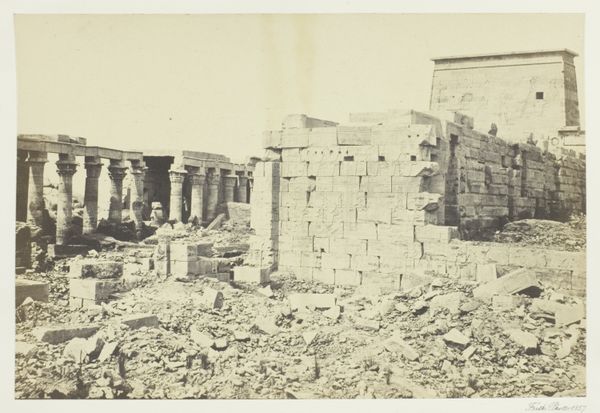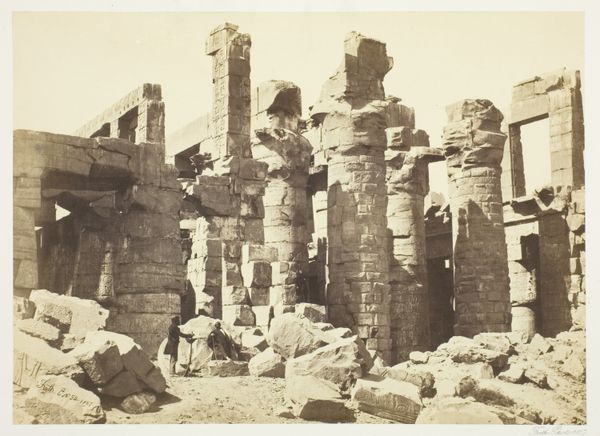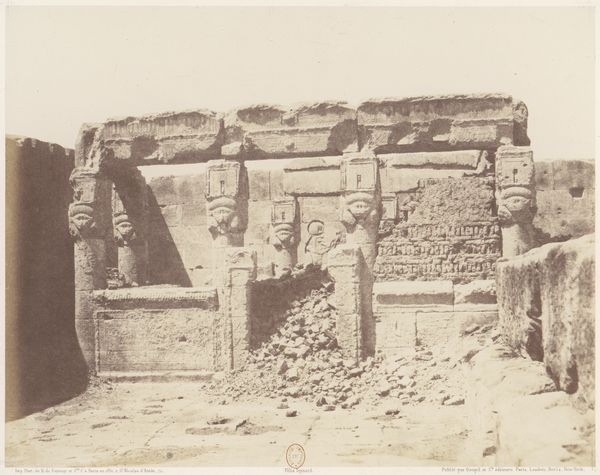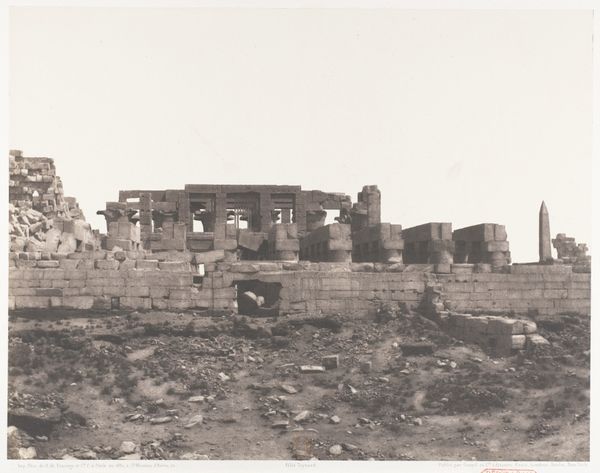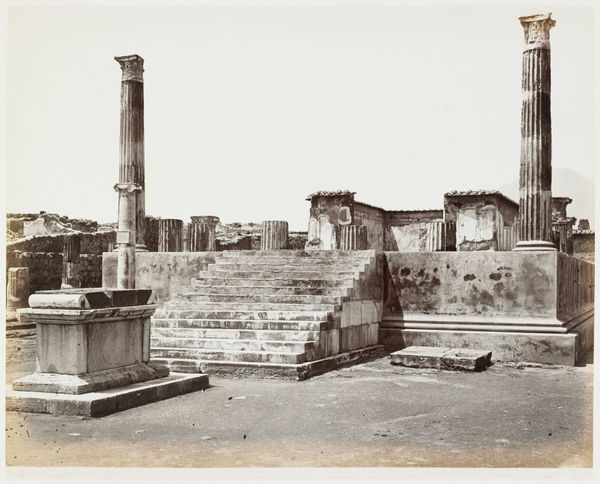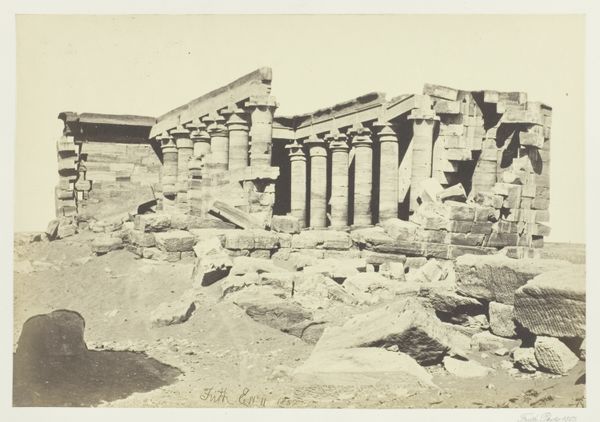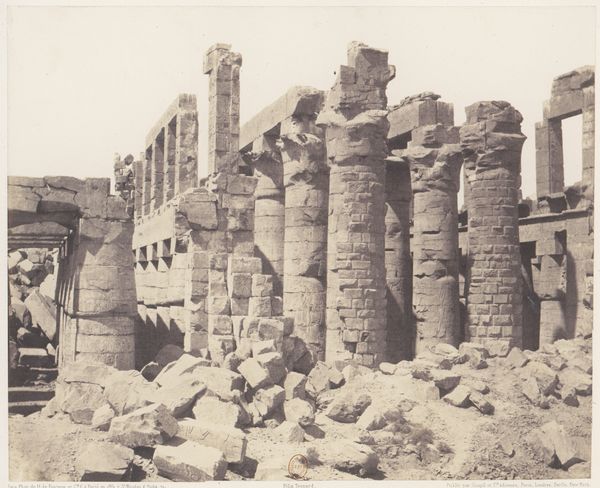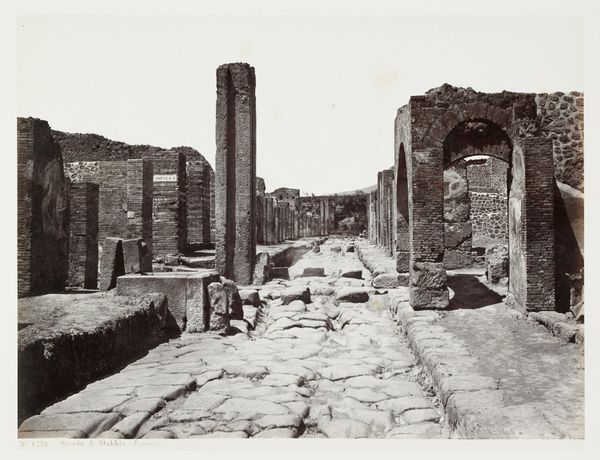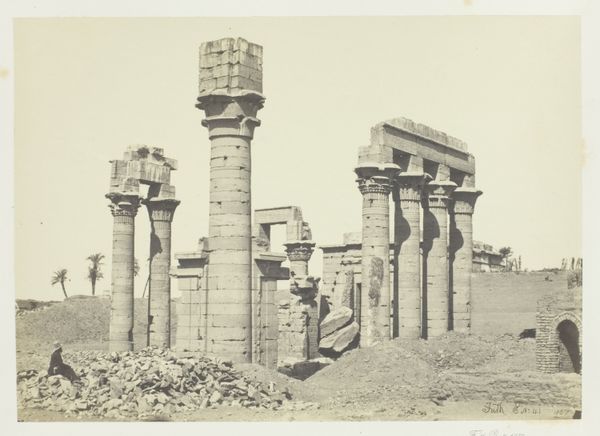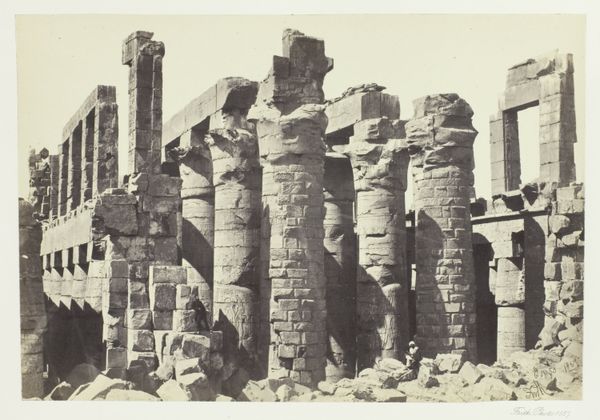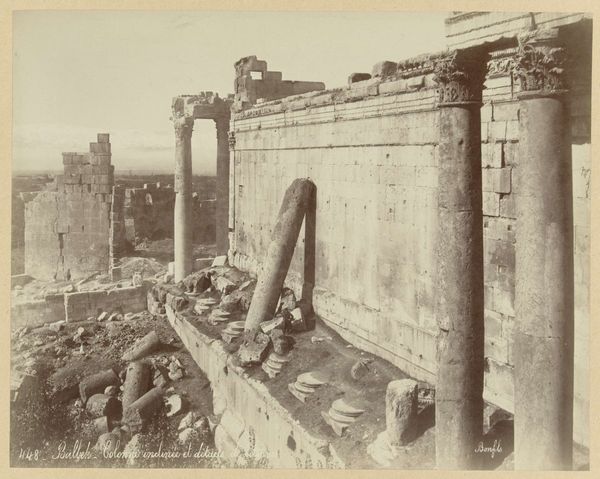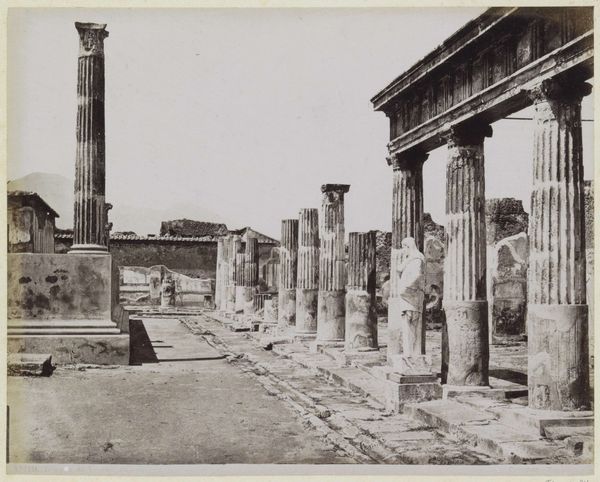
Ile de Fîleh (Philæ), Édifice du Sud et Partie de la Colonnade Occidentale Vue du Point V 1851 - 1852
0:00
0:00
photography, albumen-print, architecture
#
landscape
#
ancient-egyptian-art
#
photography
#
ancient-mediterranean
#
column
#
albumen-print
#
architecture
Dimensions: 23.7 x 30.5 cm. (9 5/16 x 12 in.)
Copyright: Public Domain
Félix Teynard made this salt print of the island of Philae in Egypt sometime in the mid-nineteenth century. Photography at this time was closely linked to archeology; it could be used to faithfully record and document the architecture of ancient sites with scientific precision. But images like this, mass produced and widely circulated, were also critical to the rise of Egyptology as a popular phenomenon in Europe. This image helped to create a sense of wonder, and the association of Egypt with romantic ideas about antiquity and empire. To understand this image better we can examine not only the archaeological site, but the social conditions that enabled Teynard to travel and photograph it. We can examine how these images functioned in the popular imagination and contributed to a set of ideas about cultural heritage which continue to shape institutions such as museums today.
Comments
No comments
Be the first to comment and join the conversation on the ultimate creative platform.


